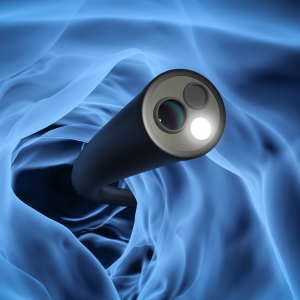Sigmoidoscopy

Sigmoidoscopy is a procedure in which a flexible tube with a camera on the end, called a sigmoidoscope, is inserted into the rectum and sigmoid colon to examine the inside of the lower digestive tract. Sigmoidoscopy is typically performed to diagnose or monitor conditions that affect the lower digestive tract, such as inflammatory bowel disease (IBD), diverticular disease, or colon cancer.
During sigmoidoscopy, the healthcare provider can directly visualize the inside of the rectum and sigmoid colon and assess their function and appearance. The procedure may also involve the use of biopsy instruments to take samples of tissue for further testing.
A sigmoidoscopy is usually performed on an outpatient basis and takes 15 to 30 minutes to complete. It is usually done with the use of sedatives, but can also be performed with no sedation given the minimal discomfort associated with this procedure.
Benefits & Risks
There are some risks associated with sigmoidoscopy, such as bleeding, infection, or perforation of the colon – as well as the risks associated with anesthetics used during the procedure. However, these risks are generally low and can be minimized by working with an experienced healthcare provider.
Overall, the benefits of sigmoidoscopy can outweigh the risks for people who are experiencing symptoms or complications related to conditions that affect the lower digestive tract. Sigmoidoscopy can provide important information about the health of the lower digestive tract and can guide the development of a treatment plan.
FAQs
Sigmoidoscopy is a procedure in which a flexible tube with a camera on the end, called a sigmoidoscope, is inserted into the rectum and sigmoid colon to examine the inside of the lower digestive tract.
Sigmoidoscopy is typically performed to diagnose or monitor conditions that affect the lower digestive tract, such as inflammatory bowel disease (IBD), diverticular disease, or colon cancer. It can also be used to assess the function and appearance of the rectum and sigmoid colon and to guide the development of a treatment plan.
During sigmoidoscopy, a flexible tube with a camera on the end is inserted into the rectum and sigmoid colon through the anus. The camera sends a live video feed to a monitor, allowing the healthcare provider to examine the inside of the lower digestive tract. Sigmoidoscopy is usually performed with the use of sedatives or a local anesthetic to numb the area.
There are some risks associated with sigmoidoscopy, such as bleeding, infection, and adverse reactions to the sedatives or anesthetics used during the procedure. There is also a risk of perforation, or puncture, of the rectum or sigmoid colon during the procedure. However, these risks are generally low and can be minimized by working with an experienced healthcare provider.
Sigmoidoscopy typically takes 15 to 30 minutes to complete. The procedure may take longer if biopsies or other procedures are performed during the exam.